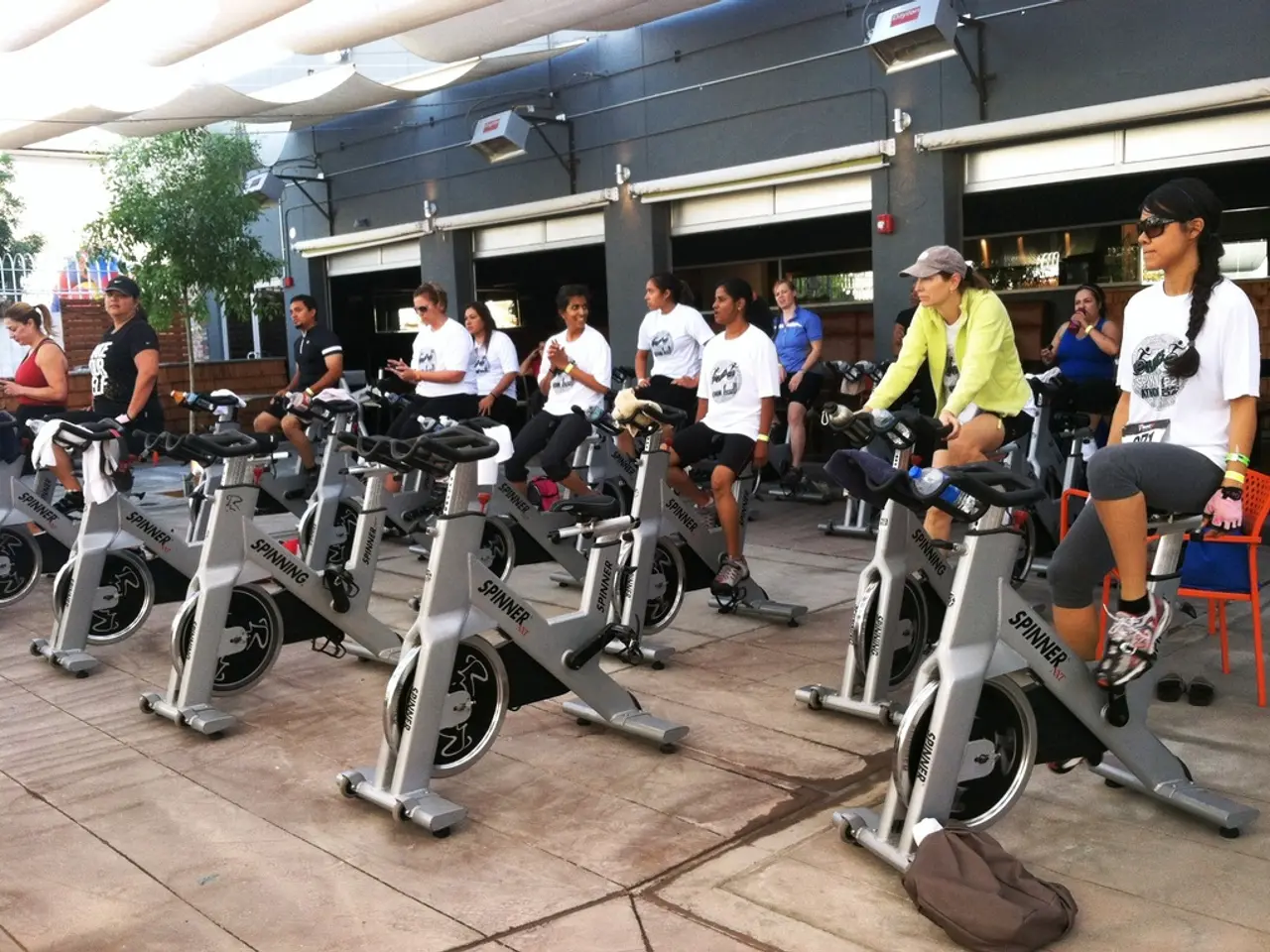Enhanced Strategies for Burning Persistent Abdominal Fat, Beyond Basic Walking
For individuals over the age of 40 or 50, burning belly fat can be a challenge due to a slowing metabolism. However, high-intensity interval training (HIIT) offers a time-efficient and potent workout solution. This fitness approach involves alternating short bursts of intense exercise with periods of rest or low-intensity recovery, which increases metabolic rate and promotes fat burning even after exercise ends.
Effective HIIT exercises for burning belly fat, particularly suited for older adults, include burpees, mountain climbers, bodyweight squats, high knees, inchworm walkouts, lateral lunges, plank shoulder taps, and jumping jacks. These exercises require no equipment, making them accessible and adaptable to various fitness levels and environments.
Burpees, a full-body exercise combining squat, push-up, and jump, burn significant calories. Mountain climbers, from a plank position, alternate bringing knees towards the chest rapidly to engage core and increase heart rate. Bodyweight squats strengthen the lower body and raise heart rate, while high knees elevate the heart rate and engage the core. Inchworm walkouts focus on mobility and core engagement, lateral lunges activate leg muscles and core stability, and plank shoulder taps build core strength while maintaining stability. Jumping jacks, a classic cardio move for overall calorie burning, complete the list.
These exercises can be modified to avoid joint stress, such as stepping instead of jumping. Incorporating low-impact cardio like cycling, swimming, or rowing can complement HIIT by burning calories and improving cardiovascular health without excessive joint strain. Typical HIIT sessions can be as brief as 20 minutes but deliver benefits comparable or superior to longer steady-state cardio, which is ideal for maintaining motivation and adherence as one ages.
A practical HIIT example routine might include burpees, mountain climbers, bodyweight squats, high knees, inchworm walkouts, lateral lunges, plank shoulder taps, and jumping jacks, repeated with rests as needed. This protocol elevates heart rate quickly, engages the core muscles directly, and promotes sustained fat burning.
In summary, high-intensity interval exercises like burpees, mountain climbers, and combined bodyweight movements are highly effective for burning belly fat in individuals over 40 or 50. They are time-efficient, adaptable, and importantly, they increase metabolic rate long after exercise, which is essential for overcoming age-related fat accumulation. Incorporate these exercises with care for joint health and combine with low-impact cardio for best results.
References: [1] ACSM's Resource Manual for Guidelines for Exercise Testing and Prescription. 10th ed. Philadelphia, PA: Lippincott Williams & Wilkins, 2018. [2] Burke, L. M., et al. "Exercise for obesity." Journal of Obesity, vol. 2012, 2012, 169363. [3] Spriet, L. L. "Effect of exercise intensity on fat oxidation during exercise and recovery." Sports Medicine, vol. 26, no. 1, 1998, 31-44.
- High-intensity interval training (HIIT) exercises, such as burpees, mountain climbers, and bodyweight squats, can be particularly effective for over-40 individuals aiming to burn belly fat due to their ability to increase metabolic rate, even after exercise ends.
- Incorporating fitness-and-exercise movements like high knees and plank shoulder taps into a wellness routine can help promote sustained fat burning and raise heart rate, making them valuable additions for those seeking effective weight-management solutions.
- Science demonstrates that short, high-intensity workout intervals, followed by periods of rest, can deliver benefits comparable or superior to longer steady-state cardio routines, making it an ideal strategy for maintaining motivation and adherence as one ages.
- To achieve optimal results, individuals can create a practical HIIT routine, consisting of exercises like jumping jacks, lateral lunges, and inchworm walkouts, and combine it with low-impact cardio, such as cycling or swimming, to improve cardiovascular health and reduce joint strain.




